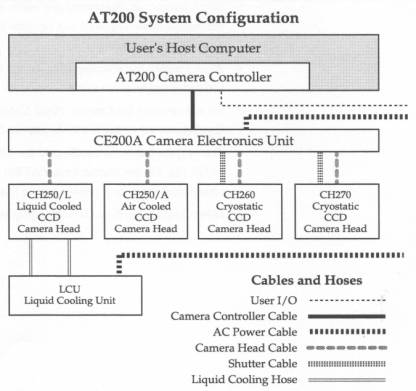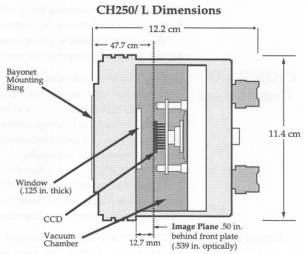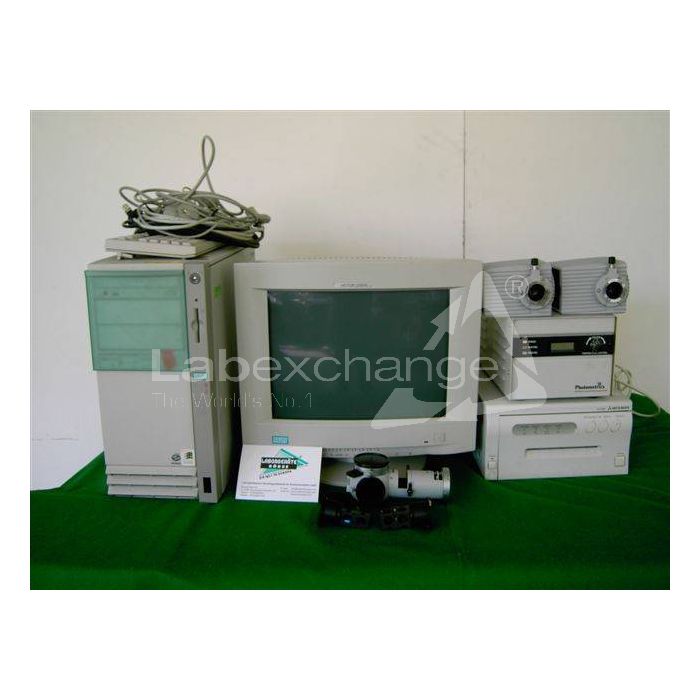Photometrics CH 250
| Objektnummer | B00009925 |
|---|---|
| Numéro d'identification | 009925 |
| Nom de l'objet | Photometrics CH 250 |
| Statut | Stock unit |
Groupe de produits: Life science / Biotechnologie
Statut, conditions de livraison et de paiement
Vérification des appareils
Les appareils d’occasion sont vérifiés par Labexchange Service GmbH avant la livraison. Vous recevez des appareils entièrement fonctionnels.
Délai d'expédition
Les délais de livraison indiqués sont les plus rapides pour l’article en cause. Les délais de fait peuvent varier au cas par cas. Les délais de livraison définitifs sont indiqués dans la confirmation de commande.
Nous offrons des livraisons collectives par principe. Le délai de livraison s’oriente à l’article avec le délai de livraison le plus long. Une livraison partielle est possible par prix additionnel.
Méthodes d'expédition
Courrier, agences d'expédition, autocueillette, livraison par flotte de Labexchange
Conditions de livraison
Prix plus frais d’expédition. Les frais d’expédition indiqués sont à prévoir. Dérogations éventuelles sont possibles.
Si les coûts de transport ne sont pas spécifiés, s'il vous plaît demander séparément les frais de transport. Les frais de transport et d'emballage indiqués se réfèrent à l'itinéraire de transport le moins cher et sont sujets à des augmentations de coûts imprévues. En raison d'événements imprévisibles, les tarifs de transport et les délais de livraison peuvent changer à tout moment et doivent être adaptés à la situation actuelle. Incoterm codage selon les Incoterms 2010: Pour personnes qui viennent chercher les dispositifs elles-mêmes: EXW, pour les expéditions par voie maritime: CFR, par avion: CPT, d'autres expéditions: DAP. Remarque: Nous n'établissons pas des preuves préférentielles/EUR1. Dans le cas d’un enlèvement par vos soins/EXW de pays à l’intérieur ou à l’extérieur de la Union européenne, nous devons conserver 16% de TVA d’acheteur comme dépôt de garantie, jusqu’à ce que nous ayons reçu l’attestation de reception/la prevue de livraison.
Modalités de paiement
Nous n’acceptons pas le paiement par lettre de credit, PayPal, etc. Dans tous les cas le montant est payable sans déduction. Jusqu’au paiement complèt l’équipement reste notre propriété. Un escompte n’est pas accordé.
|
Pays |
Modalités de paiement possible |
Remarque |
|
DE, AT, CH |
Paiement par facture, prépaiement, par carte de credit |
Paiement par facture est possible pour clients professionnels. |
|
NL, BE, LU |
Paiement par facture, prépaiement, par carte de credit |
Paiement par facture est possible pour clients professionnels. |
|
Autre pays |
Prépaiement, par carte de credit |
|
Nos conditions de vente, de livraison et de paiement sont en vigueur. Vous pouvez télécharger les documents ici.
La vente intermédiaire nous est réservée.
Défintion des statuts
Tous articles sont d’occasion, sauf si explicitement défini comme « appareil neuf ».
|
Statut |
Condition |
Remarque |
|
Immédiatement disponible |
Occasion |
L’article a été déjà entièrement vérifié et peut être envoyé directement à vous. |
| En stock |
Occasion |
L'article est en notre stock, mais doit être vérifié avant la livraison par nos techniciens Vous recevez des articles entièrement fonctionnels. |
|
Publié |
Occasion |
L’article est toujours au l’offreur. Nous achetons, vérifions et en fin livrons l’article après votre commande. Le certificat de fonctionnement ainsi que le rapport de service sont inclus à la livraison. |
|
Appareil neuf |
Neuf |
C’est un dispositif neuf. L’article n’est pas utilisé et neuf d’usine. En ce qui concerne des article neufs, la garantie du fabricant est valable. |
|
Labprocure |
Occasion |
Responsable du contenu de l‘offre d’appareil est la société Labprocure GmbH, comme annonceur. Labprocure assume la responsabilité des offres annoncées ici ainsi que des photos et des textes d’offre inclus. Labprocure GmbH, Bruckstraße 58, 72393 Burladingen. |
The AT200 CCD Camera System brings the capabilities of Photometrics" Series 200 charge-coupled device (CCD) camera hardware to host computers that are based on the AT ® bus architecture. The AT200 system hardware has been designed to integrate easily with your host computer.
Photometrics offers a variety of application and development software packages for the AT200 system. Your choice is governed by the type of work you need to do. Each software package includes an installation manual.
The AT200 CCD Camera System consists of three hardware components:
AT200 Camera Controller
CE200A Camera Electronics Unit
CCD Camera Head (models CH250/L, CH250/A, CH260, or CH270)
A system with a CH250/L liquid-cooled CCD Camera Head also requires a liquid cooling unit (LCU), such as the Photometrics LCU.

AT200 Camera Controller
The AT200 Camera Controller manages communications between a host computer that is based on the IBM ® PC/AT bus architecture and a CE200A Camera Electronics Unit.
A digital signal processor (DSP) sends control signals to the CE200A via the Camera Controller Cable; CCD data are received through the same cable. The AT200 has no memory of its own, so incoming data must be promptly stored in host RAM. Once collected into host memory, the data can be manipulated by software on the host computer.
The AT200 occupies 16 contiguous I/O address locations on the AT bus. The controller's auto-addressing logic allows host software to locate the AT200 at a blank I/O address. This ensures that the board address block does not contend with any other card in the host system.
The AT200 can be synchronized to external equipment or to a manual trigger with the User I/O connector. The connector, located next to the DB25 connector on the back of the AT200. The manual for your Photometrics application or development package provides information on implementing User I/O functions.

CE200A Camera Electronics Unit
The CE200A Camera Electronics Unit contains signal processing, camera control, and temperature control systems. It produces CCD clocking signals for the CCD Camera Head and manages the transfer of raw CCD data to the AT200.
The CE200A Camera Electronics Unit contains signal processing, camera control, and temperature control systems. lt produces CCD clocking signals for the camera head and manages the transfer of raw CCD data to the camera controller.
The internal components of the CE200A include a triple-voltage power supply, a temperature controller, an electronics card Gage, and a fan. A CE200A used with a thermoelectrically cooled camera head also contains a power supply for the thermoelectric cooler.
CCD Camera Heads
Photometrics CCD Camera Heads are cooled to reduce dark current, the spontaneous charge generated by heat and other non-photon sources. Cooling is achieved by two methods: thermoelectric (Peltier) cooling and cryostatic cooling. The CCD is housed in a vacuum chamber to improve cooling efficiency.
Each CCD Camera Head is composed of a sealed CCD enclosure, a shutter assembly, and a lens. The head contains electronics that are directly associated with CCD operation. The Camera Head Cable transmits voltages and signals to and from the CE200A. A preamplifier raises the CCD output signal to a high level for digitization.
The lens for your CCD Camera Head has a standard 35mm bayonet mount. To attach the lens, insert it into the lens mount and turn it counterclockwise until it seats.
The CCD Camera Head can also be affixed directly to an instrument. Photometrics offers CH250/L and CH250/A CCD Camera Heads with thermoelectric cooling, and CH260 and CH270 CCD Camera Heads with cryostatic cooling.
Photometrics CCD Camera Heads are cooled to reduce dark current, the spontaneous charge generated by heat and other non-photon sources. Cooling is achieved by two methods: thermoelectric (Peltier) and cryogenic (liquid nitrogen) cooling.
Photometrics offers the CH250/L or CH250/A CCD Thermoelectric Camera Head and the CH260 or CH270 CCD Cryostatic Camera Head. Each camera head is composed of a sealed CCD enclosure, a shutter assembly, and a lens. The CCD Camera Head contains electronics that are directly associated with CCD operation. The standard lens is a Nikon 35mm bayonet mount. You can affix the camera head directly to an instrument.
The sections that follow give an overview of each CCD Camera Head. They include specifications, operational requirements, and storage requirements.
CH250/L CCD Camera Head
The CH250/L Liquid Cooled CCD Camera Head is composed of a sealed CCD enclosure, a shutter assembly, and a lens.
The CCD enclosure is made up of four major components-a back heat sink assembly, a cylindrical housing, a front plate, and a window assembly joined with a vacuum seal. A sealed vacuum valve is provided in the event the camera head requires repair or re-pumping.
Specifications
Weight, excluding lens: 2.5lb (1.1 kg)
Length, excluding lens and excluding connector: 4.8 in (12.2 cm)
Diameter: 4.5 in (11.4 cm)
Distance from front of vacuum chamber to CCD image plane: .50 in (12.7 mm)
Distance to front of bayonet mounting ring from CCD image plane: 1.88 in (47.7 mm)
Suggested coolant: 50% ethylene glycol and 50% deionized water
Minimum coolant flow: 6 gallons per hour (23 liters per hour)
CCD operating temperature: Dependent on CCD. For details, refer to camera head specification sheet.
The length, diameter, and distances are shown in the figure CH250/L Dimensions.

Operational Requirements
Ambient Temperature: from 0°C to 40°C
Relative Humidity: from 0% to 80%, non-condensing
Storage Environmental Requirements
Ambient Temperature: from -20°C to 50°C
Relative Humidity: from 0% to 90%, non-condensing
CCD Camera Implementations
To take advantage of the high performance a CCD has to offer, special slow scan or still-imaging cameras have been designed to operate at a significantly lower speed than conventional video cameras. These cameras bring together several diverse technologies: high-performance signal processors, solid-state coolers, precision digitizers, and high-speed digital controllers. The benefits of slow scan readout are ultra-low noise, maximum CCD performance, and photometric precision in the image data.
A precision analog processing circuit and analog-to-digital converter are employed to amplify and digitize the CCD output signal. CCD readout may take from one tenth of a second up to several seconds, as each pixel is digitized with up to 16-bit precision. The digitized electronic image read out from the CCD can be stored in a computer's memory. Slow scan camera systems produce large quantities of data. A 2000 x 2000 pixel CCD with a dynamic range of 20,000:1 requires eight megabytes of storage for each image.
Cooling the CCD reduces dark current to negligible levels, allowing exposure times of up to hours in duration. To achieve the highest possible sensitivity, astronomers cool the CCD with liquid nitrogen, eliminating the dark current produced by thermal generation at warmer temperatures.

High energy physicists, on the other hand, use CCDs in ultra-high speed cameras to observe transient phenomena where dark current is not relevant.
A conventional shutter can be used to acquire exposures as brief as a few milliseconds or as long as an hour; a microchannel plate image intensifier can be used to gate exposures of a few nanoseconds.
Resolution
The resolution of a CCD camera is determined by the geometry of the specific CCD in use. The CCD pixels set the limit of resolution. In scientific-grade CCDs, a pixel varies in size from a few micrometers up to 48 µm; the total imaging area is 1 to 24 cm 2 . In order to avoid aliasing, moiré, or beat frequencies, the magnification must be chosen so that at least two CCD pixels cover a desired resolution element in the image plane.
There is no dead space between pixels. Charge generated by photons striking the CCD between pixels diffuses to the nearest potential well. This is referred to as "fill factor."
Sensitivity
The sensitivity of a CCD imager to light is determined by system noise level and quantum efficiency.
Quantum efficiency measures the sensor's efficiency in generating electronic charge from incident photons. Electron hole pairs are produced by photons in the region from 400 to 1100 nm. Within the visible spectrum, the photon to electron conversion factor is less than unity and it varies as a function of wavelength. At a given wavelength, the creation of charge from incident light is intrinsically linear.
Spectral Response
Light normally enters the CCD through the gates of the parallel register. These gates are made of very thin polysilicon which is reasonably transparent at long wavelengths but becomes opaque at wavelengths shorter than 400 nm. Thus, at short wavelengths the gate structure attenuates incoming light.
Thinning
With acid etching techniques, CCDs can be uniformly thinned to approximately 10 µm, and an image can be focused on the backside of the parallel register where there is no gate structure. These thinned, or backside-illuminated, CCDs exhibit high sensitivity to photons from the soft X ray to the near-infrared regions of the spectrum. Thick and Thinned CCDs illustrates the structures of both kinds of device.





